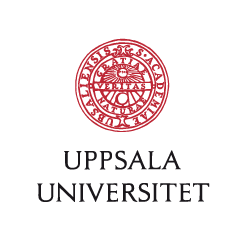 The complicated meaning, powerful assumptions, and boundless hopes about what can be revealed through neuroscience have made this discipline a national funding priority around the globe. A growing cohort of large-scale brain research initiatives aim to unravel the mysteries of the basis of feelings, thinking, and ultimately the mind. Questions formerly in the domain of the philosophical world have become part and parcel to neuroscience.
The complicated meaning, powerful assumptions, and boundless hopes about what can be revealed through neuroscience have made this discipline a national funding priority around the globe. A growing cohort of large-scale brain research initiatives aim to unravel the mysteries of the basis of feelings, thinking, and ultimately the mind. Questions formerly in the domain of the philosophical world have become part and parcel to neuroscience.
Just as science has so clearly become a global enterprise, ethics must keep pace. Cultural misunderstandings have nontrivial consequences for the scientific enterprise. Gaps in understanding negatively impact opportunities for collaboration and sharing, ultimately slowing scientific advancement. Too narrow of a view on science can limit our ability to reap the benefits of discoveries and, perhaps most damning for science, can result in a failure to anticipate and recognize the full consequences and risks of research.
To date, neuroethics discussions have been dominated by Western influences. However, the rapid neuroscientific development in East Asia in particular and the not-so-gradual relocation of a number of cutting-edge research projects from the West to East Asia, has made it clear that exploration and understanding of the ethics and cultural values informing research will be critical in engaging science as a collaborative global enterprise.
The Neuroethics Workgroup of the International Brain Initiative is comprised of members of each of the existing and emerging large-scale brain research initiatives. Leveraging the fellowship of the IBI and using an intentional culturally aware approach to guide its work, the Neuroethics Workgroup completes rapid deliverables in the near (within one year) and short-term (within two years).
With the inaugural 2017 summit, leading scientists, ethicists, and humanist co-created a universal list of neuroethics questions, Neuroethics Questions for Neuroscientists (NeQN) that should be addressed by scientists in each brain project. These NeQN were published in Neuron in 2018 and can be found here.
The neuroethics questions themselves were not necessarily unfamiliar neuroethics questions; however, these NEQN were designed to be adapted and informed by the cultural values and frameworks of each country.
The 2018 meeting served as a workshop, where each of the brain projects discussed why and how they will integrate neuroethics into their brain projects with particular recognition of the five questions from the 2018 Neuroethics Questions for Neuroscientists (NeQN) featured in Neuron. The product is the first neuroethics special issue in a high impact neuroscience journal.
Each perspective offers topics and context for their engagement with and practice of neuroethics. The issue features the seven existing and emerging large-scale brain research projects organized in alphabetical order.
The Australian Brain Alliance describes how neuroethics has been integrated into their research ethos as featured in their public outreach and advocacy efforts as well as their explorations in the public domains such as neurolaw and industry. A key component for the Australian project is diversity and inclusion, and there is a particular interest in engaging brain health with vulnerable Indigenous populations in Australia.
The Canadian Brain Research Strategy paper illustrates the rich historical efforts in pioneering neuroethics and future plans of a national collaboration to carefully consider public discourse and patient engagement as they pursue deeper knowledge of the how the brain learns, remembers, and adapts. A fundamental recognition of the neuroethics backbone of the Canadian project is that “The powerful ability of the brain to change or rewire itself in response to experience is the foundation of human identity.”
The China Brain Project discusses potential models for important public outreach campaigns and the balance of considering traditional Chinese culture and philosophy, particularly in the areas of brain death, conceptualizations of personhood and individual rights, and stigma for mental illness. The authors describe commitments for integrating neuroethics as the China Brain Project is being designed.
The EU Human Brain Project outlines its bold leadership and addresses the conceptual and philosophical issues of neuroethics and the implementation of philosophical insights as an iterative process for neuroscience research. A project with an extremely sophisticated neuroethics infrastructure, this paper provides examples of managing issues related to the moral status of engineered entities, how interventions could impact autonomy and agency, and dual use.
The Japan Brain/MINDS paper describes plans to reinvigorate historical efforts in neuroethics leadership as it expands the scope of its research and launches Japan Brain/MINDS Beyond. In particular, the project will integrate neuroethics to address issues related to privacy and data collection as well as in considering stigma and biological models of psychiatric disease.
The Korea Brain Initiative paper nicely demonstrates how advocacy for neuroscience and neuroethics at the government and policy levels go hand in hand. As Korea aims to advance its neuroscience community, the Korean government has seen neuroethics as integral to neuroscientists’ development. The Korea Brain Initiative is exploring ethical issues related to “intelligent” brain technologies, brain banking, cognitive enhancement, and neural privacy in the milieu of traditional and contemporary cultural traditions in Korea.
The US BRAIN Initiative outlines its efforts in building an infrastructure for neuroethics in research and policy and for funding research as it plans its roadmap for the next phase of BRAIN to 2025. Example of ethical issues that arise from the project’s goals of understanding neural circuitry include the moral relevance and status of ex vivo brain tissue and organoids as well as unique ethical concerns around informed consent in brain recording and stimulation in humans.
Each project illustrates that neuroethics is important regardless of the scope and methodologies inherent in its research goals and demonstrates the utility of the NeQNs for today’s and future scientists within and beyond the large-scale neuroscience research projects.
Karen Rommelfanger
PhD, Director, Neuroethics Program Emory Center for Ethics, Co-chair International Brain Initiative Neuroethics Workgroup

 On Thursday, February 28, Amal Matar defends her thesis in the field of reproductive ethics.
On Thursday, February 28, Amal Matar defends her thesis in the field of reproductive ethics.


Recent Comments